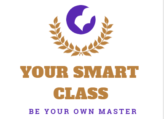Introduction
Science is often perceived as a standalone discipline, but its essence lies in its deep interconnectedness with other subjects. Understanding the correlation of science with various school subjects is crucial in fostering an interdisciplinary approach to education. This integration not only enriches the learning experience but also helps students see the relevance of science in diverse contexts.
1. Science and Mathematics

Mathematics and science are often called the twin pillars of education. The principles of math are fundamental to scientific research and problem-solving. For example:
Physics and Calculations: Concepts such as force, motion, and energy require mathematical equations.
Data Analysis: Biology and chemistry experiments often involve statistical analysis to interpret results.
Graphical Representation: Charts and graphs, derived from math, help visualize scientific data effectively.
Teaching these subjects together helps students develop analytical and critical thinking skills.
2. Science and Social Studies

The relationship between science and social studies highlights the societal impact of scientific discoveries. Examples include:
Geography and Earth Science: Understanding natural phenomena like earthquakes and climate change.
History of Science: Learning about the inventions and discoveries that shaped civilizations.
Environmental Studies: Analyzing the social implications of pollution and resource management.
This correlation enables students to appreciate the role of science in societal development.
3. Science and Language

Science enhances language skills by introducing technical vocabulary and promoting effective communication. Conversely, language aids in expressing scientific ideas clearly. Correlations include:
Scientific Writing: Crafting research papers and lab reports.
Debates and Presentations: Explaining scientific concepts in layman’s terms.
Reading Comprehension: Understanding complex scientific texts.
This integration helps students articulate scientific knowledge effectively.
4. Science and Art

The blend of science and art fosters creativity and innovation. Examples of this correlation include:
Scientific Illustrations: Visualizing anatomical structures or chemical reactions.
Architecture: Combining engineering principles with aesthetic design.
Media and Technology: Using graphic design to present scientific findings.
Encouraging this link nurtures both logical reasoning and artistic expression.
5. Science and Physical Education

Science is at the core of understanding physical health and sports performance. Key intersections include:
Human Anatomy: Studying body mechanics to enhance athletic performance.
Nutrition Science: Understanding dietary needs for better health.
Sports Technology: Utilizing innovations like fitness trackers.
This correlation promotes a healthy lifestyle through informed choices.
6. Science and Technology

Technology is the practical application of scientific principles. In the classroom, this relationship manifests as:
Coding and Robotics: Encouraging problem-solving and programming skills.
STEM Projects: Integrating science, technology, engineering, and mathematics.
Digital Simulations: Using virtual labs for experiments.
This integration prepares students for the demands of the digital age.
Benefits of Integrating Science with Other Subjects
Holistic Understanding: Students gain a broader perspective of how disciplines interact.
Problem-Solving Skills: Encourages innovative thinking to solve real-world problems.
Engagement: Makes learning more dynamic and relatable.
Career Readiness: Prepares students for interdisciplinary fields like biotechnology, environmental science, and data analysis.
Implementing Interdisciplinary Teaching in Schools
Collaborative Projects: Encourage teachers from different disciplines to work together.
Theme-Based Learning: Design curriculum around real-world problems.
Workshops and Seminars: Provide training for teachers to adopt interdisciplinary methods.
Use of Technology: Leverage digital tools to bridge gaps between subjects.
Conclusion
The correlation of science with other school subjects offers a path to holistic education. By embracing interdisciplinary teaching methods, schools can nurture well-rounded individuals equipped to face the challenges of the modern world. This approach not only enhances academic performance but also fosters lifelong curiosity and learning.
Share this:
Discover more from YOUR SMART CLASS
Subscribe to get the latest posts sent to your email.








